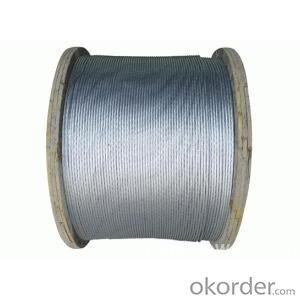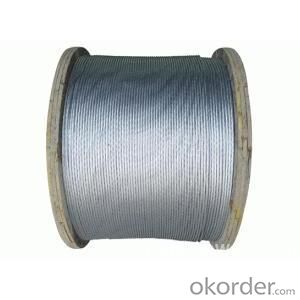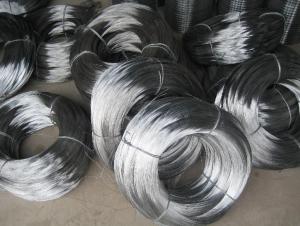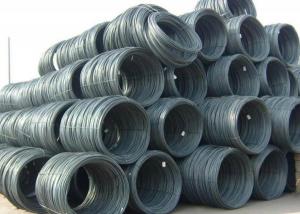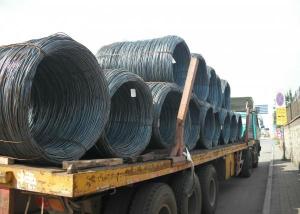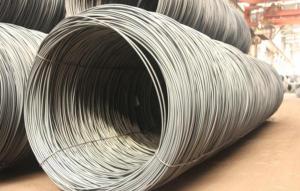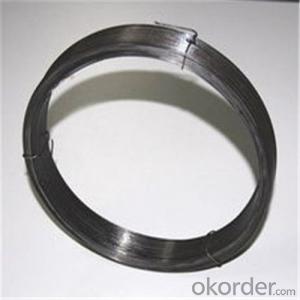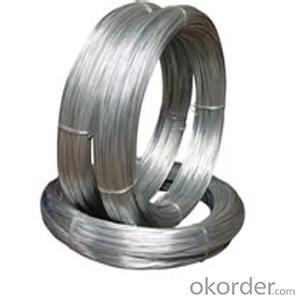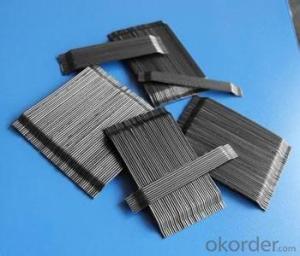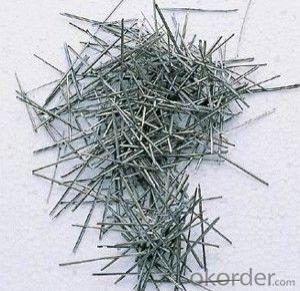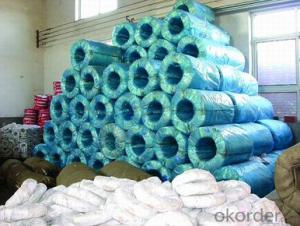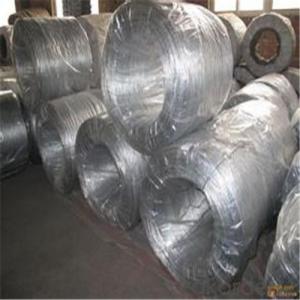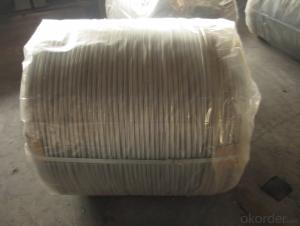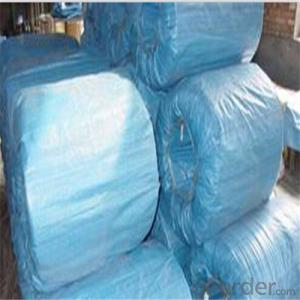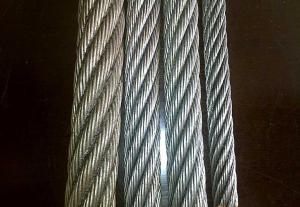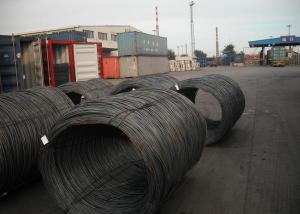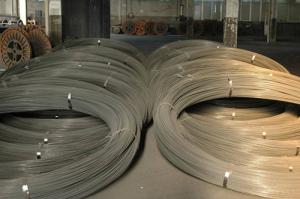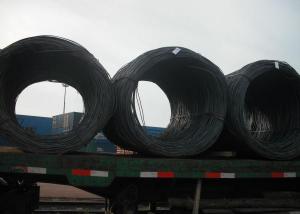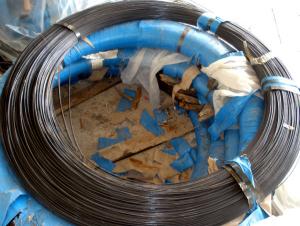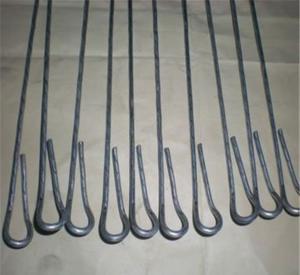Galvanized Steel Wire Rope For Elevator
- Loading Port:
- Tianjin
- Payment Terms:
- TT OR LC
- Min Order Qty:
- 200 m.t.
- Supply Capability:
- 20000 m.t./month
OKorder Service Pledge
OKorder Financial Service
You Might Also Like
Quick Details
Steel Grade: Carbon Steel
Standard: ASTM, BS, DIN, GB, JIS
Wire Gauge: 0.7MM-40mm
Place of Origin: Chongqing, China (Mainland)
Type: Galvanized
Application: Steel Wire Strand
Alloy Or Not: Non-alloy
Special Use: Cold Heading Steel
Model Number: CH010908
Packaging & Delivery
| Packaging Details: | Coils or as per your request. |
|---|---|
| Delivery Detail: | 30days |
Specifications
Galvanzied,High Anti-Corrison
ISO9001:2008 cert.
20years experience .
Galvanized Steel Wire Strand
Conductors for overhead lines, galvanized steel wire strands, messenger wire, overhead ground wire and stay wire
1 x 7, 1 x 19 from 1.0mm to 4.19mm with BS183, BS4565, BS443, ASTM-475, ASTM363, ASTM640, ASTM498, BSI EN 50, 189 and IEC888 standards
Round wire concentric lay overhead electrical standard conductors IEC 1089
Galvanized coating on wire BS 443
Packing Finish:In Coils,Plastice paper,Strong PVC Clothes.
- Q: I wired an outdoor lamp-post. I tested it before wiring it to the fuse box...and if I touch the lamp-post I feel the current (a slight shock). I will be using a ground fault breaker....so I assume if I wire it to that I am going to loose the connection. Any thoughts on what is wrong?
- In addition to the answer Paul gave, check the wiring that the white wire is the neutral or common wire and that it goes to the shell side of the lamp holder. A few years ago, I had a similar problem, when all of the checks were made, the panel was wired with the black wires on the neutral buss. Hence all of the devices were wired backwards. Call a qualified professional electrician to do the work.
- Q: Ceiling fan has a black wire, white wire, green wire and also a black and white wire.
- Black + White, sounds like a 3 wire cable with ground. It will carry power. Black, power Black and white, power White, neutral Green, grounding. One of the wires with power will power the lights. The other powers the motor for the fan.
- Q: I have a 1990 chevy c1500 2wheel drive. I bought it not running. I have found the problem and it the tbi injectors are not hooked up. The 4 wires on the 2 injectors are red and the 4 wires going to the tbi are red,blue,green,white. what wires go were? Thanx for all your help.
- The red and white wires are the power to each injector and are actually hooked to each other in the harness. These 2 wires should be hot when you turn the key on. The green and blue wires are the grounds that lead back to the ecm. The red and blue wires go to the passenger side injector (red is far left as you face the vehicle). The white and green go to drivers side (white on left as you face it)
- Q: i know nothing about wire. thanks. :|
- Solder wire has a lower melting point, allowing you to melt it onto something else. In it's wire form, it will also snap very easily. (not good for fastening things together). Mechanical wire (I'm assuming electrical wire), is designed to withstand high temperatures (and hence, electrical currents), and are usually be bent much more. It's also usually sheilded in rubber (e.g. electrical cords, computer cables, coxial (tv) cable, etc).
- Q: does anyone know what wires go on which post on a 1995 chevy lumina 3.1 starter? it was off when i bought the car and im lost. i cant find a straight answer anywhere. a picture of the wiring in question is an instant best answer lol
- the small wire goes to the inside / right side pole everything else go to the big post
- Q: I have installed a new wiring harness on my trailer, and two new LED trailer lights. The tail lights work, both turn signals work, but for some reason, I do not have a brake light on the right side. Both lights are grounded to their own post, and I do have a good ground on the coupler of the trailer. If a turn signal and brake light in a 4 wire system are using the same wire (green in this case)- how can one work, while the other is not? Any good ideas? I really appreciate the help.
- assuming it was working ok before....... funky symptoms like that (where you can't imagine the circuit that would make 'em behave like that) almost always turn out to be a weak ground -- like the ground is ok for turn signals because only one side is on at a time, but when you demand enough current to light up both sides, it just ain't happening. you can rule out a ground issue between the vehicle and trailer by hooking a jumper cable between the frames. if that don't produce a change, then run an oversized wire from the fixture direct to the connector.
- Q: I changed my Sony to another car and am having problems wiring it back up. Any help on how to wire this ?
- factory radios have extra wires that are not needed with an aftermarket install most of the time (wires that control the dimmer on the radio, speed sensitive volume) you will need three power wires (constant, ignition, and ground), plus your speaker wires use a test light to test your wires, usually at the radio the yellow wire is your constant, the red is your ignition, and black is always ground to find your constant use the test light, it will be hot at all times so that your radio can remember the time, and your settings- next you need your ignition, it is only hot when the key is on or in the accessory position, to tell the radio when to come on- the ground is self explanatory to find which wires go to what speakers all you need is a 9v battery, put the positive end to a wire and test all of the other wires to the negative side and you will hear a crackling noise from a speaker when you have the right combination
- Q: i would like to hook up a cd player in my dakota but i need a wire color diagram, anyboby no where or no the colors
- 1995 Dodge Dakota Wiring Diagram
- Q: Just bought a new amp for my truck. The speaker outputs needs to be indiviually wired to the door speakers. Do you splice into the speaker wire or the trucks harness?
- ideally you want to wire directly from the amp to the door speakers with new speaker wire but doing this properly requires removing some of the trimming and passing the new wires throughout the car. you can also take the easier route and pass the wires from your amp up under the steering wheel behind the center console and splice them into the existing wires going to the door speakers. as long as the wattage isn't very high the latter shouldn't be a problem. however, if it were up to me i would use new wires and pass them throughout the car, removing the trimmings, etc. this can be somewhat of a pain to do if you have never done it before though.
- Q: i bought a programable thermostat that says it needs a c wire to be able to use the remote...i dont have one of these wires on my old thermastat but im kinda understanding the c wire was just to power a clock on certan thermostats is there a way to rig a c wire to power what i need???
- the c wire is the common wire on your 24 volt control circuit.... wire used by some thermostats to power clocks or lights...... if you have extra wires in your thermostat wire cable it should be a blue wire and will hook up in your furnace to the blue wire or will be hooked to the c terminal on your thermostat wire connection board in your air handler...you can use any color wire in the cable that you are not using as long as you connect it up the way i just mentioned..
Send your message to us
Galvanized Steel Wire Rope For Elevator
- Loading Port:
- Tianjin
- Payment Terms:
- TT OR LC
- Min Order Qty:
- 200 m.t.
- Supply Capability:
- 20000 m.t./month
OKorder Service Pledge
OKorder Financial Service
Similar products
Hot products
Hot Searches
Related keywords
